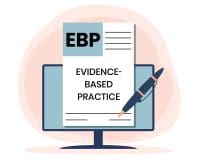Dear Editor,
Nurses are quitting or on the verge of doing so (Statpearls, 2022). Positions for nurses in healthcare are always in high demand, but the demand on nurses is also very high. There are many specialties in healthcare with different acuity levels that spread nurses thin. Nurses are getting burned out, which means that they are exhausted in every way possible. The reason for this is because this career comes with misperception that nurses are always strong, they work demanding shifts, and the consequence of this falls on both the nurses and patients. There may not be ways to prevent nurse burnout, but there must be ways to teach nurses how to handle it.
In the public eye there is a perception that nurses are strong because they can give care at different acuity levels while also taking on multiple tasks and demands. People do not see the challenges that nurses face before and after they leave patient rooms. It has been found to be increasingly true during the recent pandemic when nurses were perceived as heroes, and they were being applauded for their hard work instead of supported and assisted (Galanis, 2021). Nurses are often presented with a long list of tasks with a short time frame to get them done. This leaves nurses unable to take all their breaks. It is important to educate nurses and employers that burnout happens when floor nurses cannot separate work tasks from self-care, and breaks are not always optional. Employers should recognize the need for a quiet break room with comfortable seating so that nurses can take moments to release their stress. The ANA code of ethics provision #2, it states that they should “seek the assistance of peers or supervisors in managing or removing themselves from difficult situations” without crossing professional boundaries (Hegge, 2015, p.15). Nurses need to be assured that if they are weak and tired, they can lean on their employers and their team for support.
Another weight on nurses is the long and demanding shifts. Nurses work long shifts, and in these shifts are several sets of timeframes in which a nurse is expected to get a list of tasks done. In these time frames, patients still have needs to be met that are always unexpected. There is no way for a nurse to know when their patient will need something or what they will need. Some examples are a code (life threatening situation), or a patient may be thirsty. Long-term care is one specialty that puts a particularly heavy load on nurses. Nurses in this specialty are put under immense pressure with time sensitive medications, and a largely uneven nurse: patient ratio (Eltaybani, 2021).
Nurses are not given much leniency when it comes to their need to take it easier on their bodies and mental health. Employers must recognize the need to take some of this pressure off their nurses during break times by providing a safe and quiet place for nurses to unload and unwind and having an extra nurse to relieve them for their breaks. This will prevent and save both nurses and patients from the consequences of burnout.
Nurse burnout causes unsafe patient care, sometimes life-threatening mistakes, and it causes nurses to want to quit. Not only are nurses responsible for their decisions, but they are also responsible for delegating tasks under their scope of practice. ANA Code Of Ethics provision #4 states that the nurse should ensure that they can delegate properly to staff under their license and scope of practice (Hegge, 2015, p.15). This means the nurse’s mind should always be clear and level to make safe decisions. When mistakes are made due to burnout, the consequence falls on the nurse and the patient, not those they are delegating to. Consequently, it is very important for employers to be supportive of their nurses and provide support on ways to relieve their stress.ReferencesEltaybani, S., Yamamoto-Mitani, N., Ninomiya, A., & Igarashi, A. (2021). The associationbetween nurses’ burnout and objective care quality indicators: a cross-sectional survey inlong-term care wards. BMC Nursing, 20(1), 1–10. https://doi-org.ezproxyh.pierce.ctc.edu/10.1186/s12912-021-00552-zGalanis, P., Vraka, I., Fragkou, D., Bilali, A., & Kaitelidou, D. (2021, August). Nurses’burnout and associated risk factors during the COVID-19 pandemic: A systematic reviewand meta-analysis. Journal of advanced nursing. Retrieved April 28, 2022, fromhttps://www.ncbi.nlm.nih.gov/pmc/articles/PMC8250618/?msclkid=1d8cc021c71211ec431e96eaf74c87b
Hegge, M. (2015). Code of ethics for nurses with interpretive statements. American NursesAssociation.Statpearls – NCBI Bookshelf. (n.d.). Retrieved May 4, 2022, fromhttps://www.ncbi.nlm.nih.gov/books/NBK493175/

















